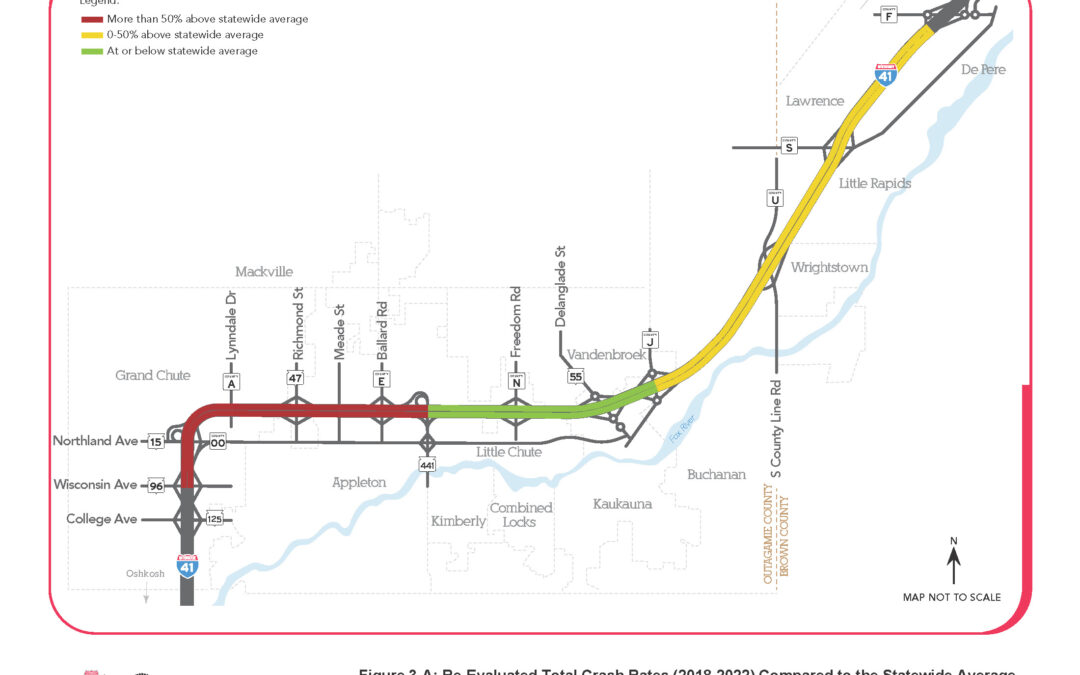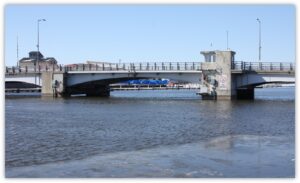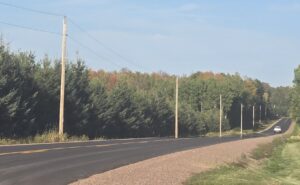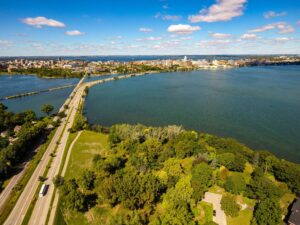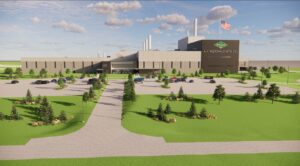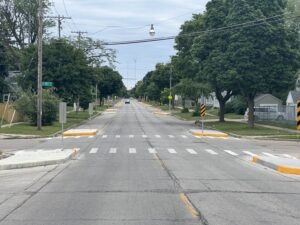The challenge and the opportunity? I-41 between Appleton and De Pere, built in the 1960s, is congested and has a higher rate of crashes than similarly configured freeways in Wisconsin. The project area has multiple roadway design deficiencies, and much of its pavement and bridges are nearing the end of their useful lives and need replacement.
What is the “fix,” and how does it benefit industries and communities? The I-41 Project will expand 23 miles from WIS 96 (Wisconsin Avenue) to County F (Scheuring Road). The project is within two counties and nine municipalities and includes one system interchange (between I-41 and WIS 441), ten existing service interchanges, and a new service interchange at I-41 and Southbridge Road. The project will also improve drainage and implement appropriate stormwater management techniques.
The Federal Highway Administration added I-41 to the Interstate Highway System in April 2015. Converting US 41 to I-41 did not involve roadway improvements; however, the FHWA and WisDOT anticipated that future work on I-41, such as the current project, would bring the roadway to interstate standards.
Less congestion, increased travel time reliability, and a safer roadway will benefit the regional and statewide economy and improve the quality of life for commuters and others.
What makes the investment possible? Projects like I-41 are made possible by adequate and consistent transportation revenue, which recognizes the impact of construction inflation on purchasing power. If projects and, therefore, the projects’ benefits are delayed, costs go up.
What’s next? Construction began in April, and, depending on funding, WisDOT expects to complete the project during the 2030 construction season.
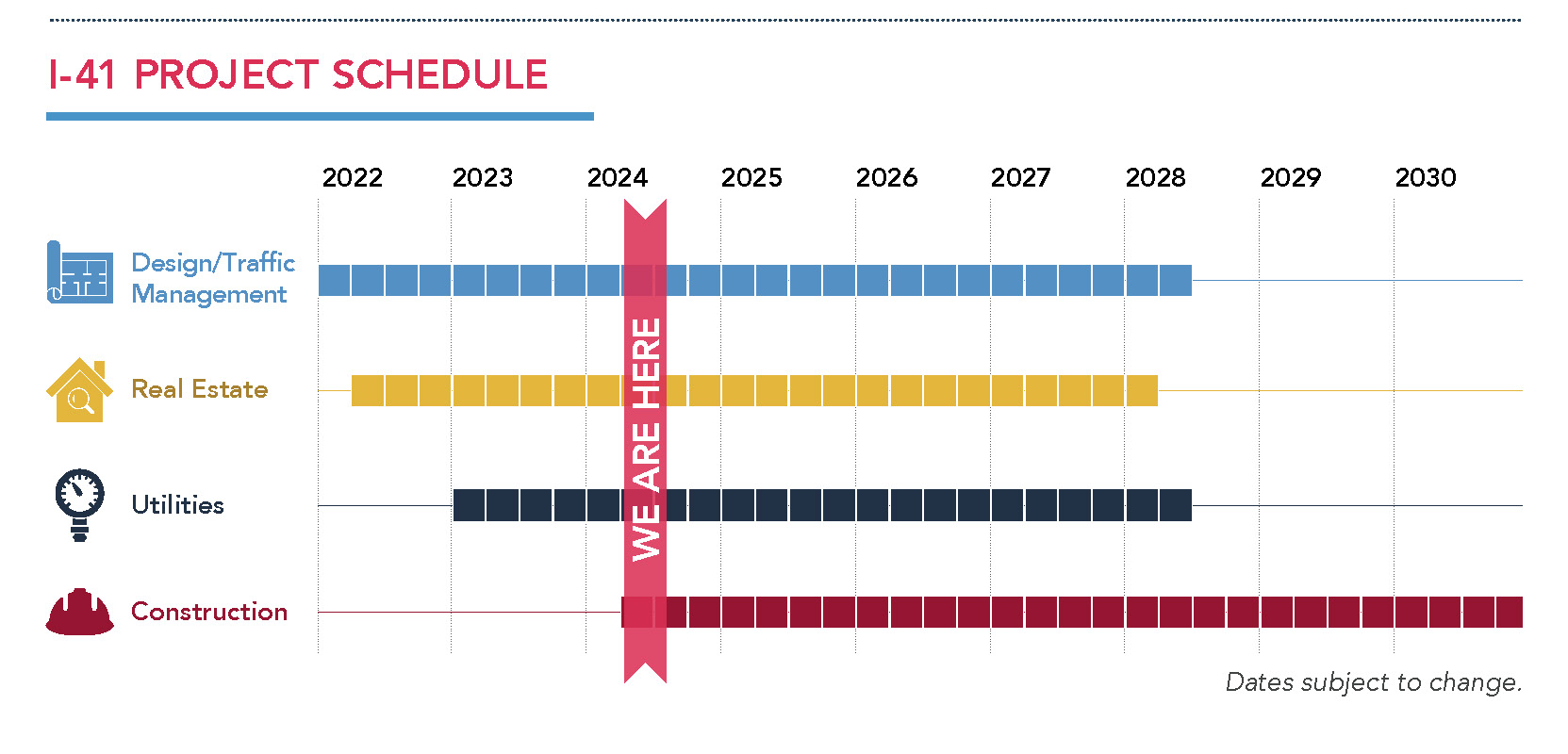
Timeline from WisDOT I-41spring 2024 project newsletter.

